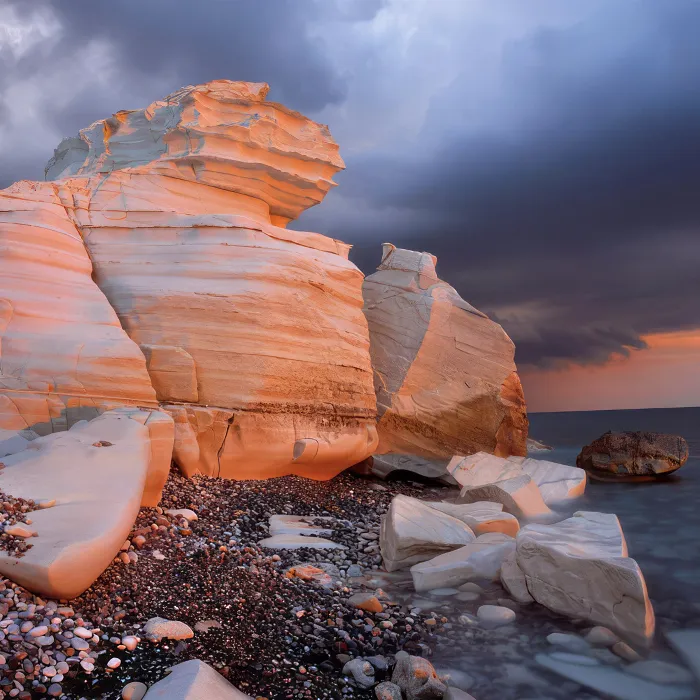Frozen or motion blurred? I think this shot contains both techniques. The movement of the snowshoer was (almost) frozen by the flash, only in the snow and a few details you can see some motion blur - despite 1/200 second, Canon EOS 1Ds MK III with EF f2.8 15 mm. Gaißkopf, Zillertal Alps, Austria: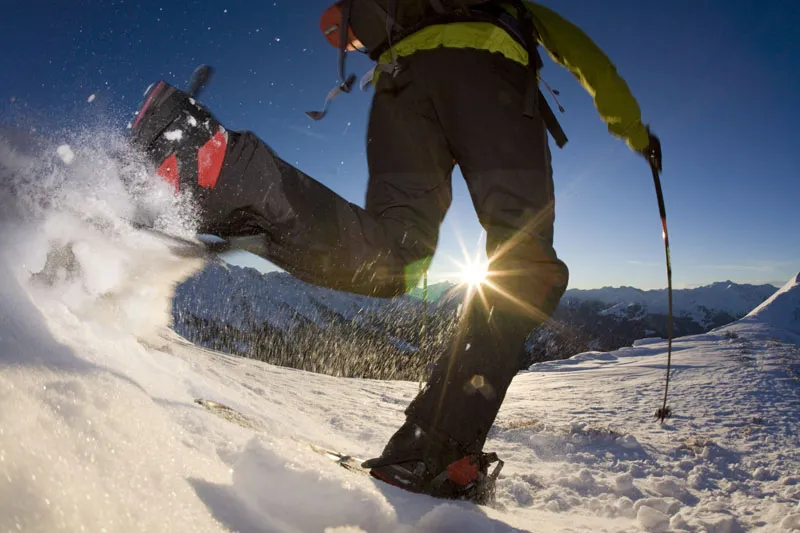
Do you still remember analog times? When, after an intensive photo tour, we waited for days for the slide films to be developed, then took them out of their envelopes with awe, placed them on the light stand with trembling fingers and finally, as the climax of the analog ritual, so to speak, looked at the individual images with a magnifying glass? What followed, however, was often an emotional storm of highs - with holes in the air, rough gusts, but also moving states of suspension in a vacuum. Some shots were better than expected because the Fuji Velvia once again surpassed reality in terms of color. Others, however, were disappointingly poor. And precisely in the area of "mountain sports in motion", hits were a matter of luck, control and, above all, correction during photography was impossible. At the time, I only had the time and budget to check various parameters on an instant photo with my medium format camera and the attached Polaroid back for the most elaborate advertising productions.
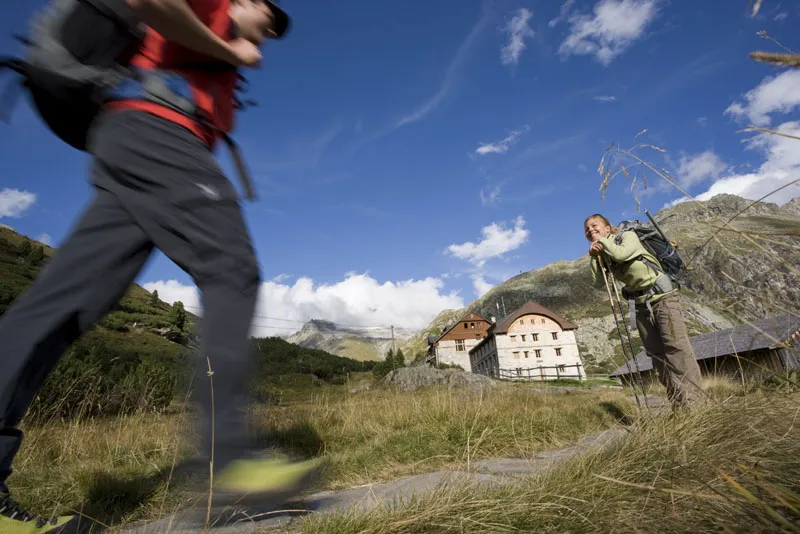
It is the contrast between sharpness and blurriness that brings this image to life. The low camera position and the cropped person represent a modern visual language. Shutter speed 1/40 second, Canon EOS 1Ds MK III with f4 17-40 mm. Berliner Hütte, Zillertal Alps, Austria.
As classic and timeless as "frozen" outdoor and mountain sports action photography is, as dynamic, beautiful, fast and modern can be pictures taken with or without motion blur. Digital photography can really come into its own in this very creative area of the photographic world. What was really difficult in analog photography and required a lot of experience, but also luck, is now much easier with a much higher success rate.
However, good "pull-alongs" require not only a good technical knowledge, but above all routine and the willingness to constantly learn and experiment.
The ideal "pull-along": a beautiful foreground and background, two bikers in matching colors and the perfect shutter speed (for this subject) of 1/15 second, Canon EOS 1N with EF f2.8 300 mm L.
Soilasee, Ammergau Alps, Germany.
What technical factors play a role?
- The light: Basically, you can "pull along" in all light situations and all forms of moving subjects. However, it makes sense to shoot in low-light situations, not only to achieve slower shutter speeds, but also because, in my opinion, the effects are more beautiful.
- The focal length: There are also no constraints or restrictions regarding the focal length. I can photograph a skier 50 meters away with the 300 mm telephoto lens, but the nearby mountain biker is just as exciting, beautiful, crazy, etc. with the 14 mm super wide-angle lens.
- The flash: Many shots in this style only get that certain something through the use of the flash. It provides targeted lighting of the subject (and not the background) and ensures sharp focus on the moving person. Very important: To ensure that the tail of the movement is behind the subject, the flash should be used on the second shutter curtain, i.e. the flash is only used at the end of the shutter speed.
- The tripod: It sounds crazy, but in some areas, preferably when the dragging only takes place on one axis, the tripod can provide valuable services. Ideally, however, the tripod should be equipped with a three-way panhead and not a ball head. Only then can the camera be moved in a controlled manner on one axis (usually horizontally, for example to follow a cyclist) and the other two axes be fixed at the same time.
- The stabilized lens: Of course, we will not have a tripod with us on many a long or extreme tour. The so-called electro-optical image stabilizers (image stabilizers from Canon, VR lenses from Nikon or the image stabilizers integrated in the Sony SLR cameras) are a great help. Put simply, all these systems reduce our shaking and vibration. With their help, we can hold up to three or four stops slower shutter speeds out of hand.
As is so often the case, this picture also lives from the contrast of motion blur and the partial impression of sharpness created by the flash. Shutter speed 1/10 second at ISO 800, Canon EOS 5D with EF f4 17-40 mm. Ski tour to Piz Kesch, Albula region, Switzerland.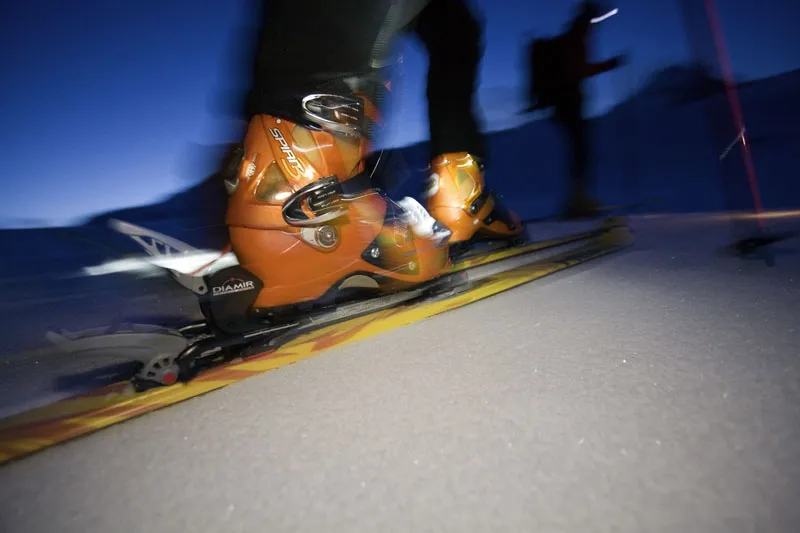
The basics:
What are the specific digital advantages and what do you have to consider technically in order to achieve the best possible results? It may sound illogical, but a very important point is the background of the actual scene. It should be as even and calm as possible in order to create a soft and monochrome surface that is then delicately blurred in the picture. Only then will the main subject, be it a biker, hiker, skier or climber, stand out.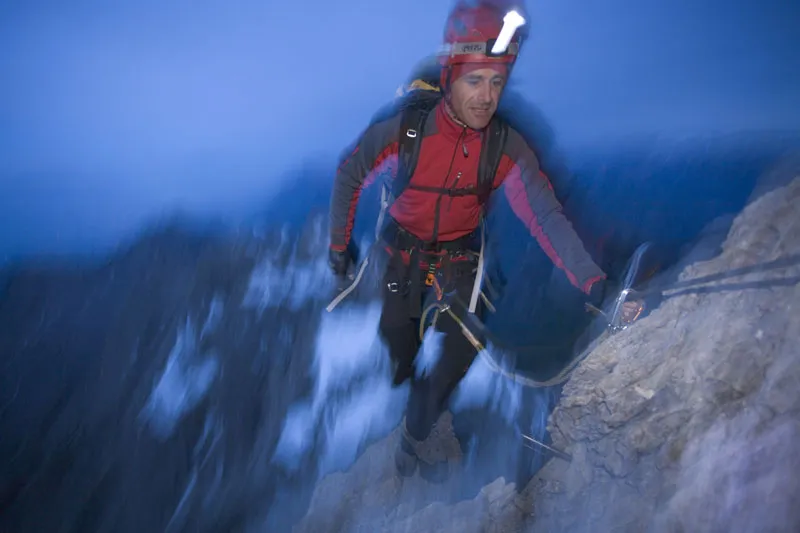
Shooting in the dim light of twilight is a standard photographic situation in the mountains. But I made a technical mistake with this picture - who can spot it? Shutter speed 0.3 seconds at ISO 400, Canon EOS 5D with EF f4 17-40 mm Schiara, Dolomites, Italy.
PS: I stupidly used the flash on the first shutter curtain ...
Once you have found a suitable subject, you usually take a first test image to determine the correct exposure using the histogram. By the way: I also use aperture priority, i.e. automatic aperture priority, in this area of photography. On the one hand, I also use it to achieve my desired shutter speed with a "twist of the finger" on the setting dial and, on the other hand, so as not to forget to reset various automatic modes or programs. For me, working in a reduced way has proven its worth in this respect. By changing the Blender, I can set the desired, in most cases rather slow, shutter speed accordingly. But how long does the shutter speed have to be to achieve a specific effect?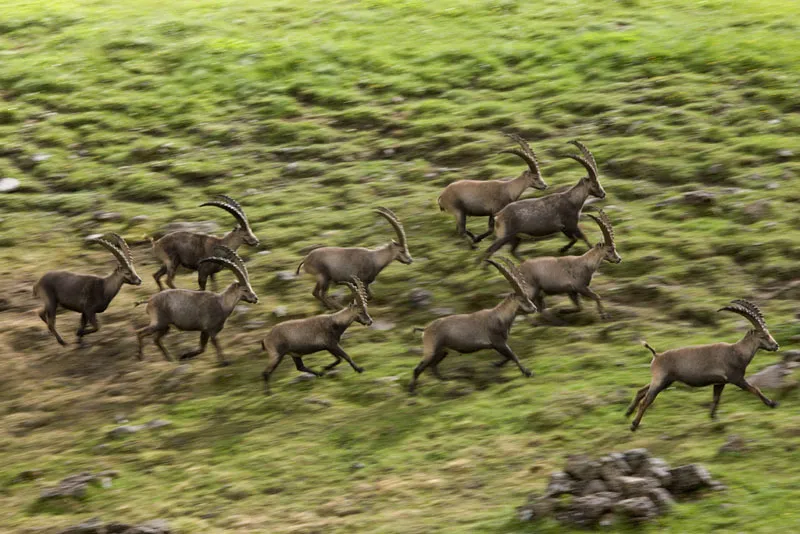
I'm not really an animal photographer! But this herd of ibexes suddenly ran in front of my camera, a classic pull-along. Shutter speed 1/50 second, Canon EOS 1Ds MK III with Zeiss 100-300 mm without stabilizer! Lechtal Alps, Austria.
For very fast sports (e.g. skiing or downhill mountain biking etc.), speeds between 1/60 and 1/250 of a second are often enough to achieve a pleasant, not too long wipe effect or motion blur.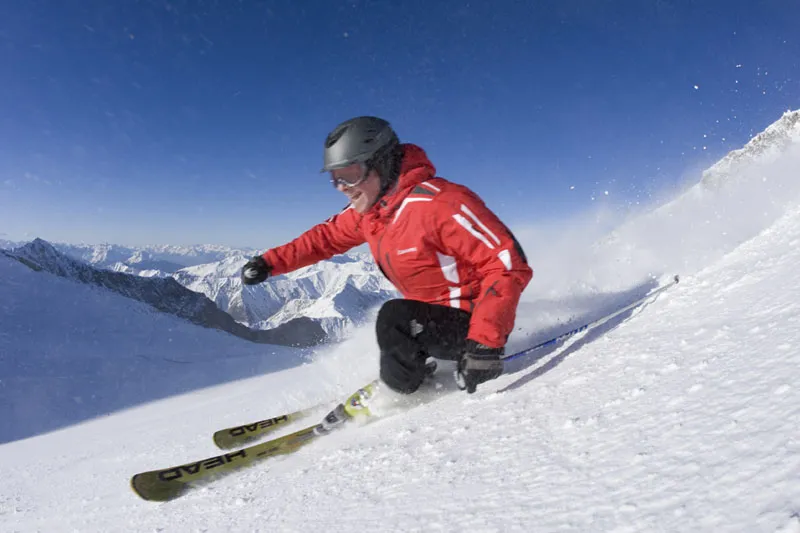
Creative blurring and dynamics or just a blurred skier? Due to the extreme wide angle of only 15 mm (full-frame fisheye), the distances in this picture are also deceptive. Despite a shutter speed of only 1/800 of a second, the skier in this shot!!! motion blurred. Nevertheless, the picture has a certain charm in my eyes. Canon EOS 1D MK III with EF f2.8 15 mm. Hintertux, Zillertal Alps, Austria.
Normally, however, shutter speeds between 1/30 and 1/4 second deliver good results. In exceptional cases or to achieve extreme effects, it is even possible to use shutter speeds of up to one or even two seconds. This is where an incredibly valuable advantage of digital photography comes into play. If the effect is too long or too short, I can open the Blender further for shorter times or close it further for longer times after viewing the first shots on the monitor. If this creative leeway is not enough, we can even adjust the ISO sensitivity further. If there is too little light, i.e. long exposure times, we go to ISO 400 or 800 to achieve shorter exposure times; if there is too much light, i.e. short exposure times, we go to ISO 50, for example, to achieve a longer exposure time.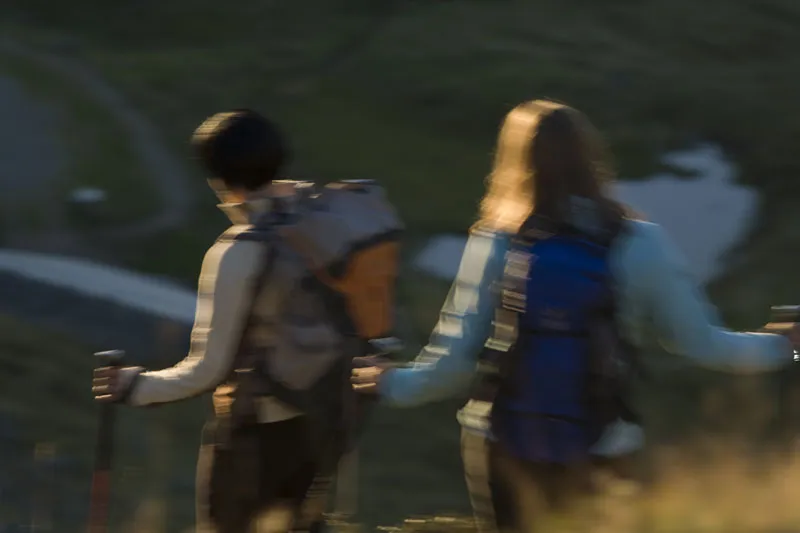
Everything is blurred here, a shot without any sharpness. In short - I would delete the picture ... Shutter speed 1/40 second, Canon EOS 15D with EF f4 70-200 mm L IS). Kellerjoch, Zillertal Alps, Austria.
I work with flash for a lot of motifs in this dynamic and quite abstract area of photography. I can also test its effect beforehand and reduce or increase its power if necessary.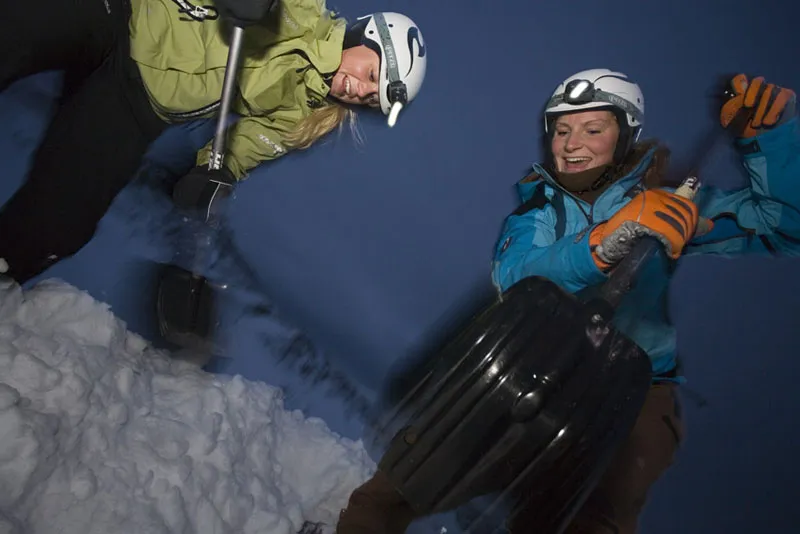
A gloomy scene. Only the flash brings life to the night scene. The people are (almost) frozen, the motion blur is on the shovels, hands etc. Shutter speed 1/15 second, Canon EOS 5D with EF f4 17-40 mm L, flash minus 1.5) Lyngen Alps, Norway.
With my Canon system flash units, for example, I have to reduce the power somewhat for subjects with a dark background (see last picture). With very bright subjects (for example skiers in front of white snow) I have to increase the flash output. Flashes and cameras from Nikon work more precisely and balanced in this respect. With some subjects, it can even make sense to deviate from the automatic flash mode in terms of focal length in order to illuminate the subject with the flash in a more concentrated way. For example, if you have a 24 mm lens on the camera, it can be an advantage to set the flash to 35 mm.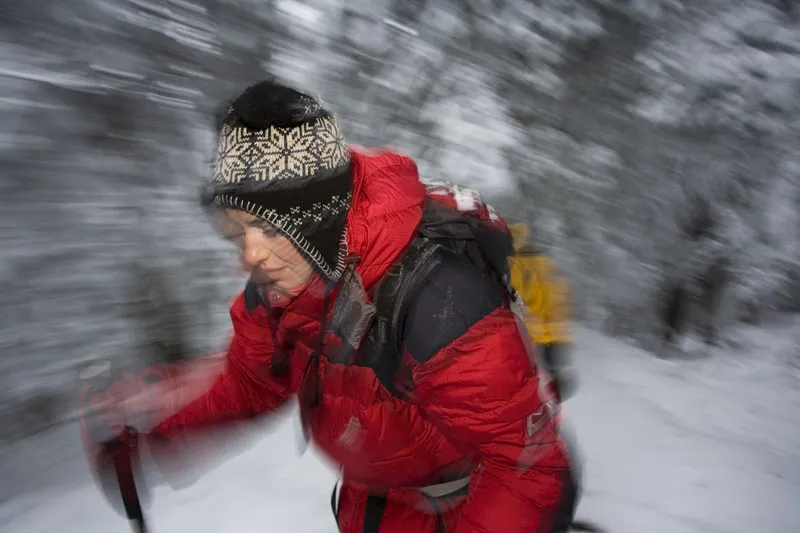
Pull along and flash. Despite the strong wide-angle lens, the trees in the background were (just) sufficiently blurred. Shutter speed 1/10 second, flash minus 1, Canon EOS 5D with EF f4 17-40 mm L. Baumgartenschneid, Bavarian Alps, Germany.
To emphasize the importance of the digital possibilities once again, I would like to briefly summarize the essential factors:
- Checking the exposure via the histogram.
- Assessment of the wiping effect or motion blur via the monitor.
- Checking the partial sharpness of the subject using the magnifying glass function.
- Assessing the strength and direction of the flash light used.
- Assessing the composition and positioning of people in the picture.
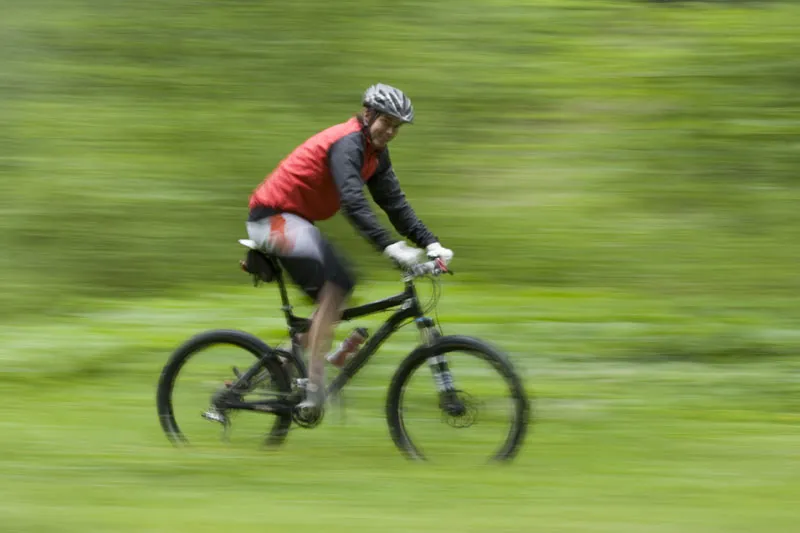
The classic: biker in front of a monochrome background. The partial sharpness of the face is important. Shutter speed 1/8 second, Canon EOS 1D MK III with EF f4 70-200 mm L at 100mm. Zillertal Alps, Austria.
The technique:
The "pulling along" itself is technically relatively simple and always follows the same pattern: I follow the subject with the camera from as stable a position as possible. For horizontal movements I usually use landscape format, for vertical movements I sometimes use portrait format. My right index finger is always on the shutter release so that I can release the shutter often and in a controlled manner if necessary. I also use the shutter release to activate the autofocus. I determine the appropriate AF point in advance depending on the composition of the picture. To summarize: I follow the action with the camera and release the shutter again and again, usually with a slow shutter speed.
This shot was taken from a tripod. The two hikers "walked into the picture" several times in a controlled manner. In my opinion, however, the motion blur should not be any stronger. Shutter speed 1/8 second, Canon EOS 5D with EF f4 17-40 mm L. Val Grande, Italy.
However, we have to act a little differently when motion blur is the photographic goal. The camera usually remains stationary and motionless, only the subject moves. The movement is blurred by the slow shutter speed, but the surroundings are sharp.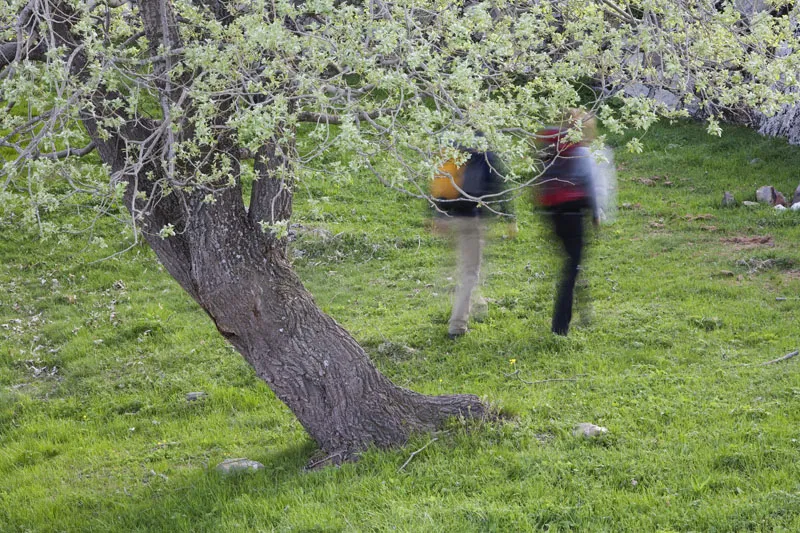
I actually only wanted to photograph the tree from the tripod. Then came the idea with the hikers ... Shutter speed 1/2 second, Canon EOS 5D with EF f2.8 70-200 mm L IS. Mercantour National Park, France.
Of course, you can combine both techniques, dragging and motion blur. But be careful: too much blur doesn't always have to be creative.
However, we can only use many of the digital advantages if a scene is repeatable. For example, if we are on location with friends, or the professional photographer with models, and our actors can drive, run, jump or climb a location as often as they like.
The "friends" should be "looked after" afterwards so that they stay friends. I'm thinking of cakes, cookies, chocolate, but also souvenir photos!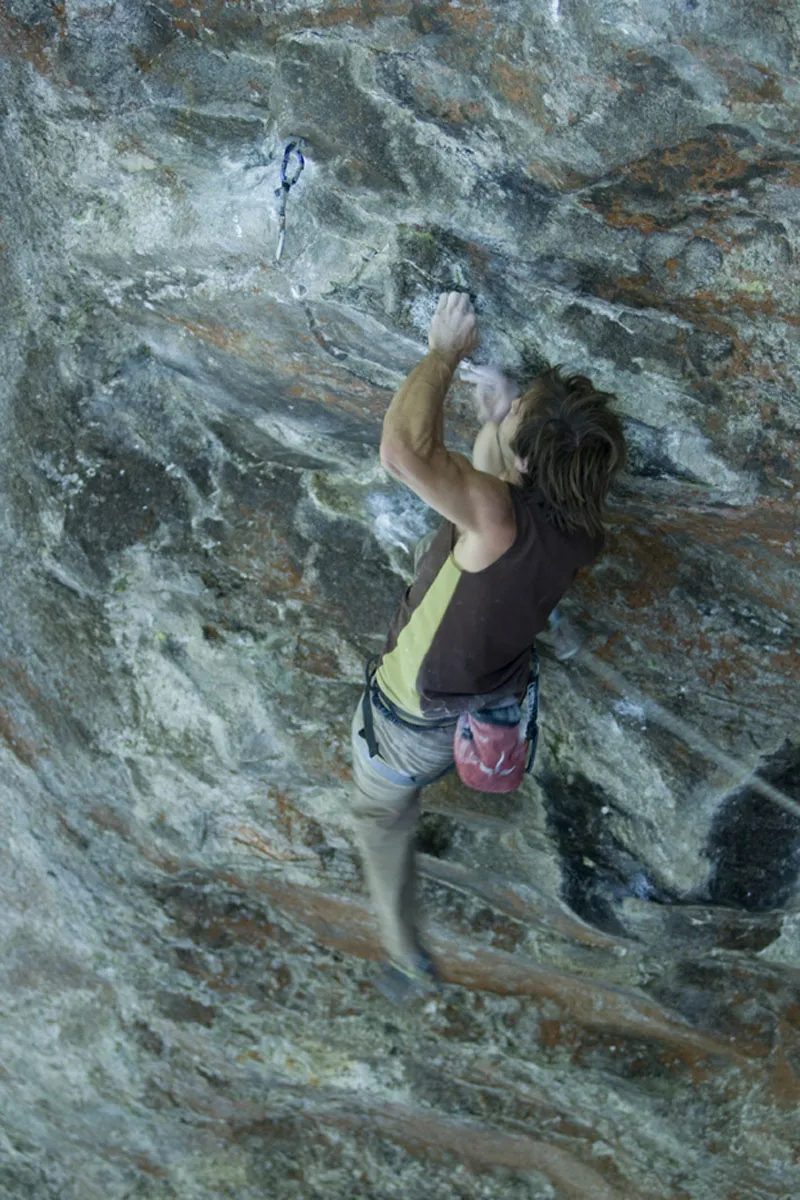
Without the image stabilizer, nothing would be sharp in this shot. So the motion blur is partially on the body, and the rock below is also blurred due to the open Blender. Shutter speed 1/10 second, Canon EOS 1D MK III with EF f2.8 70-200 mm L IS at 70mm. Bachhexe, Zillertal Alps, Austria.
However, if we are photographing during an event or a sporting competition, the technique should already be "in place". Scenes can then only be repeated to a limited extent - except at mass events, where a large number of participants pass the same photographically suitable spot one after the other. On the other hand, 300 mountain runners in succession really do offer enormous potential for practice ... have fun in motion.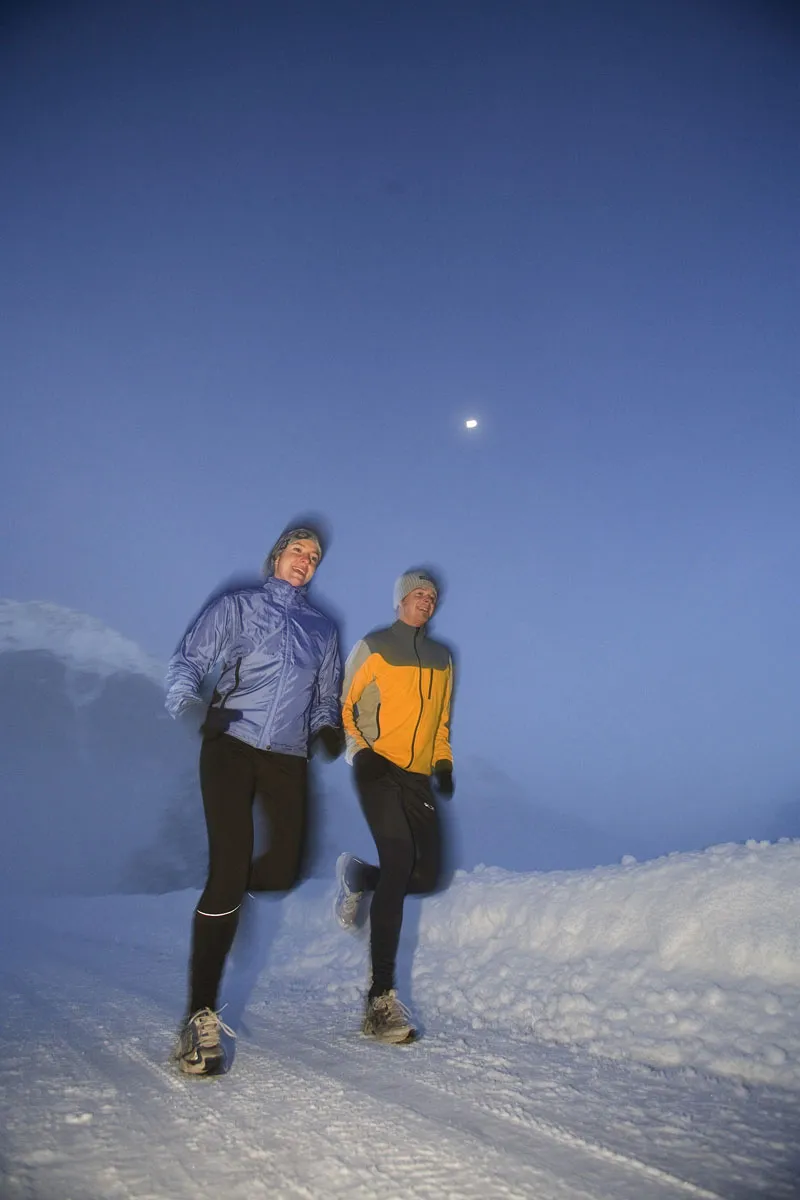
Finally, another motion blur with flash. The colors glow, fog, moon and twilight create atmosphere. Shutter speed 1/25 second, flash minus 1, Canon EOS 1D MK II with EF f4 17-40 mm L. Längenfeld, Ötztal Alps, Austria.
